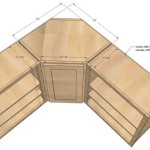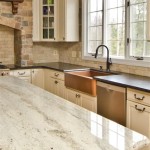How to Lime Wash Oak Cabinets
Limewashing is a centuries-old technique used to create a soft, muted, and airy finish on surfaces. This traditional method involves applying a diluted mixture of hydrated lime to the surface of wood, allowing the grain to show through while creating a subtle whitewash effect. Limewashing oak cabinets can transform their appearance, offering a fresh, modern aesthetic while preserving the natural beauty of the wood.
The process involves preparing the cabinets, mixing the limewash solution, applying it to the cabinets, and sealing the finished product. While it may seem daunting at first, limewashing oak cabinets is a simple and rewarding project that can significantly enhance the look of your kitchen or bathroom.
Prepare the Cabinets for Limewashing
Before applying the limewash, it is crucial to ensure the cabinets are properly prepared. This involves cleaning, sanding, and priming the surfaces. Start by thoroughly cleaning the cabinets with a mild detergent and warm water to remove any dirt, grease, or dust. Allow the cabinets to dry completely before proceeding.
Next, lightly sand the cabinets using fine-grit sandpaper. This step helps to create a smooth surface for the limewash to adhere to and helps to even out any imperfections. Be cautious not to sand the wood too aggressively, as this can damage the finish and create deeper imperfections. After sanding, wipe down the cabinets with a damp cloth to remove any dust particles.
While not always necessary, applying a primer to the cabinets before the limewash can improve the final finish. Using a primer helps to seal the wood and prevents the limewash from soaking into the wood too deeply, resulting in a more consistent and even appearance. Choose a primer specifically designed for wood and apply it according to the manufacturer's instructions.
Mix the Limewash Solution
The next step involves preparing the limewash solution. There are various commercially available limewash products available, but you can also create your own using hydrated lime, water, and a binder. The specific ratio of these ingredients can vary depending on the desired level of opacity and the type of lime used. A good starting point is to use a 1:1 ratio of hydrated lime to water, adding a small amount of acrylic binder for increased adhesion and durability. However, it's essential to research the specific properties of each component before mixing.
Always wear protective gear, such as gloves and a mask, when working with hydrated lime as it can be irritating to the skin and respiratory system. Carefully add the hydrated lime to the water, slowly stirring to prevent clumping. Once the lime is fully dissolved, add the binder and mix thoroughly until the solution is smooth and uniform. It is important to test the limewash on a small, inconspicuous area of the cabinet before applying it to a larger surface. This allows you to assess the color and consistency of the limewash and make any necessary adjustments to the mixture before applying it to the entire cabinet.
Apply the Limewash to the Cabinets
With the limewash solution prepared, you are ready to apply it to the cabinets. Apply the limewash evenly and liberally using a brush, roller, or even a sponge. Work in small sections, ensuring the limewash is evenly distributed. For a more rustic look, apply the limewash with a brush and allow some of the natural wood grain to show through. For a more polished finish, use a roller or sponge for a consistent application. Allow each coat to dry completely before applying the next coat. Depending on the thickness of the limewash and the humidity, drying times can vary. However, typically, you should allow several hours between each coat.
The number of coats required will depend on the desired level of opacity and the wood's porosity. For a more subtle finish, one or two coats might suffice. If you prefer a more opaque finish, apply three to four coats. Keep in mind that the limewash will lighten slightly as it dries, so account for this when determining the desired final color.
Seal the Limewashed Cabinets
Once the limewash is completely dry, the final step involves sealing the cabinets to protect the surface from moisture and staining. A water-based sealant is recommended as it will not affect the limewash's natural color. Apply the sealant using a brush or roller, ensuring an even coat is applied over the entire cabinet surface. Allow the sealant to dry completely before using the cabinets.
Limewashing oak cabinets offers a unique and beautiful way to refresh and enhance the look of your kitchen or bathroom. By following these simple steps, you can achieve a beautifully weathered finish that is both stylish and timeless.

Limed Oak Cabinet Kitchens

Liming Wax On Oak Cabinets

Liming Wax On Oak Cabinets

How To Get A Limewash Effect On Kitchen Bunnings Work Community

How I Updated My Oak Cabinets Without Paint By Using Briwax Easy Budget Kitchen Makeover Only 24

Update Kitchen Cabinets No Sanding

How To Get A Rustic Bleached Wood Finish House Mix

Limed Oak Cabinet Kitchens

How To Change Orange Oak Wood Furniture Into Whitewashed In 3 Steps

How To Get A Rustic Bleached Wood Finish House Mix
Related Posts








